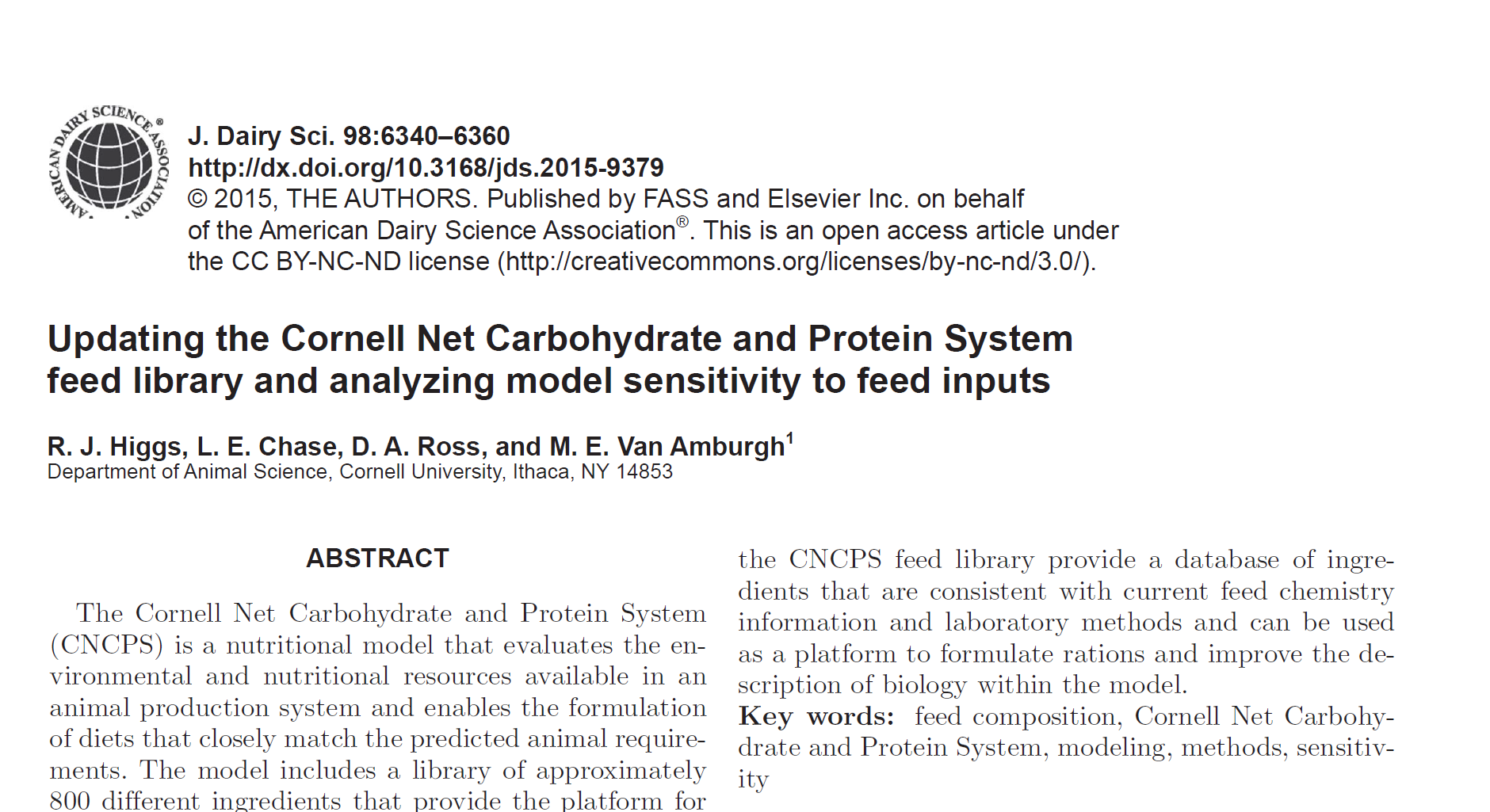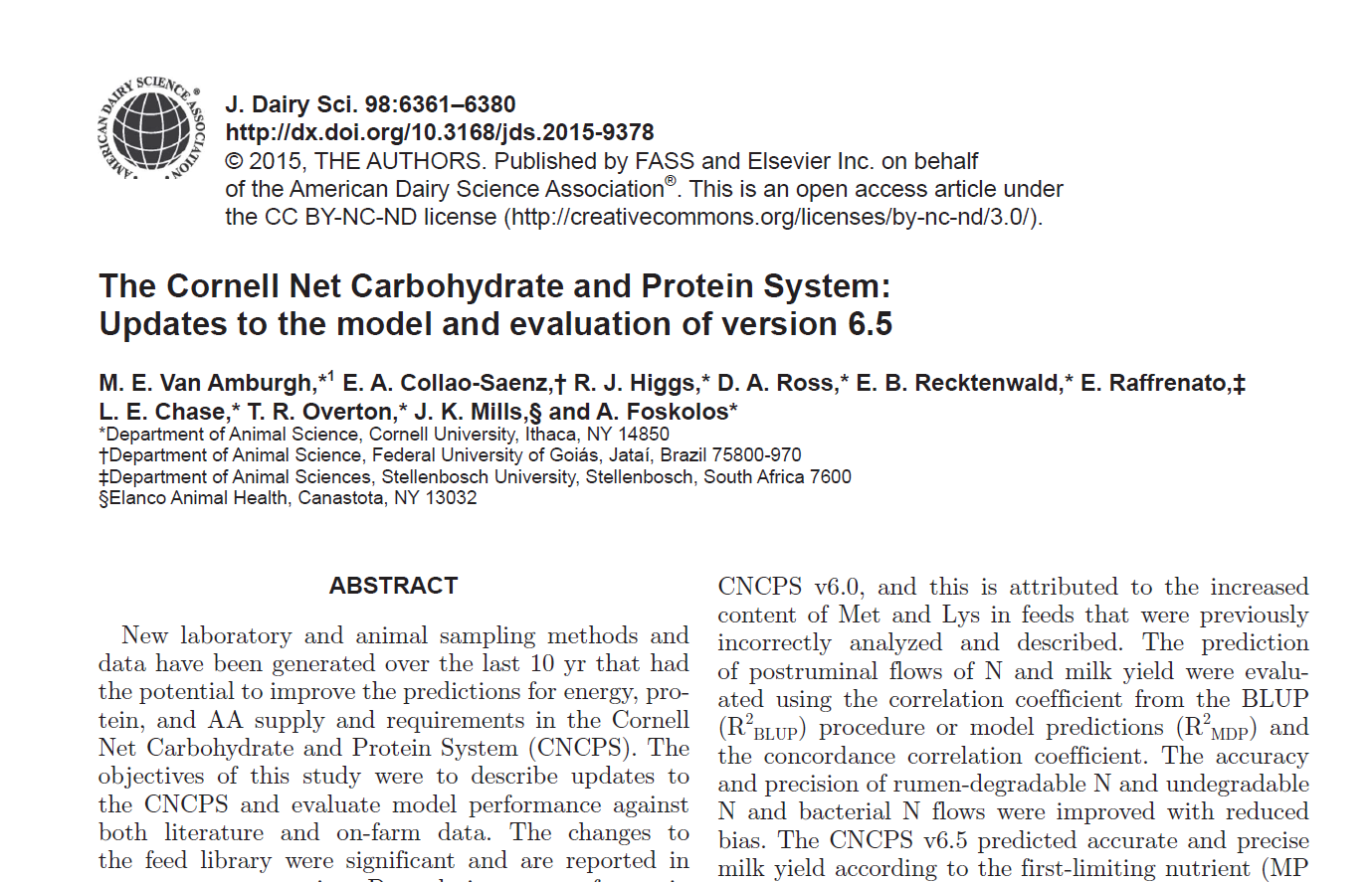Each forage acts different within the cow
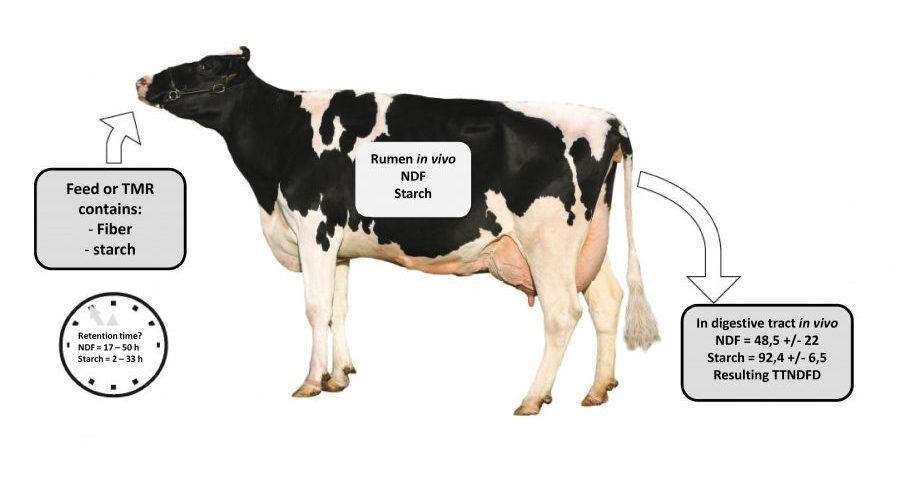
TTNDFD
A value with infinite possibilities in practice. The TTNDFD value is included in numerous analysis packages (e.g., CNCPS ANALYSIS PACKAGE or DYNAMIC CARBOHYDRATE) and opens the door to better evaluate home grown feeds and forages and understand the fiber digestibility of the cow. It is a scientifically recognized value (Goeser et al., 2009 J. Dairy Sci 92: 3842-3848), which was developed and patented by the University of Wisconsin-Madison. It is an acute value, which is used to benchmark the ration or the performance prediction. It is used by feeding consultants as follows:
Direct comparison of forages on farm. Comparison of all forages on the farm with a TTNDFD value. This provides a quick overview of which forages perform best.
Maximum use of homegrown forages. TTNDFD during the harvest helps to assign the respective feed to individual performance groups. Feedings with high TTNDFD values are provided for high-performance cows, where feed quality is always a limiting factor. Lower TTNDFD values indicate that the feed is to be fed to dry cows or young cattle.
NDF, the determining factor in the basic feed TTNDFD stands for “Total Tract NDF-Digestibility” and combines different NDF parameters. Already in the last InfoMail we reported on the importance of NDF in feeding (see also InfoMail 5/2017; https://www.rockriverlab.eu/informationen/infomail/). NDF is the neutral detergent fiber (also referred to as aNDF in the feed analysis report of ROCK RIVER LABORATORY EUROPE). An adequate NDF content in the ration is essential for the survival of the microbes in the rumen and thus the health of the cow.
In the American CNCPS model (Cornell Net Carbohydrate and Protein System) the NDF is defined with two variables, as feed-agent-specific parameters, the uNDF (indigestible NDF) and the NDF kd.
The higher the TTNDFD the better the basic feed. The table shows target values for individual feeds. The TTDNFD is expressed in% of the NDF.
What is the complex fiber digestibility for the cow? Four variables determine the TTNDFD: 24h, 30h and 48h NDFD (Neutral Detergent Fiber Digestibility) in conjunction with uNDF240 (indigestible NDF). No nutrient per se is as variable as the fiber.While uNDF240 helps to understand the potential performance, it is only part of the information. More important for the understanding of the rumen is the rate of digestion, which is called kd value (NDF kd). TTNDFD combines both the speed (NDF kd) and the potential capability (uNDF240). These feed-specific variables are related to a mathematical model of a high-performance cow. Here, certain assumptions are defined as framework conditions for the cow. In addition to the body weight and the performance, this also includes the passage rate (kp) and the digestion rate in the last section of the colon, where bacteria can convert NDF to volatile fatty acids. This NDF degradation in the gut is small with 5-10% of the total digestion, but it is necessary to describe the total energy coming from the NDF.
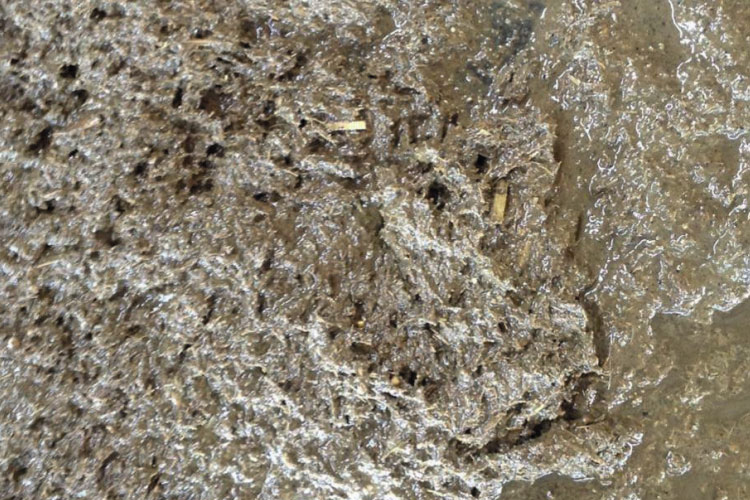
Fiber is not Fiber!
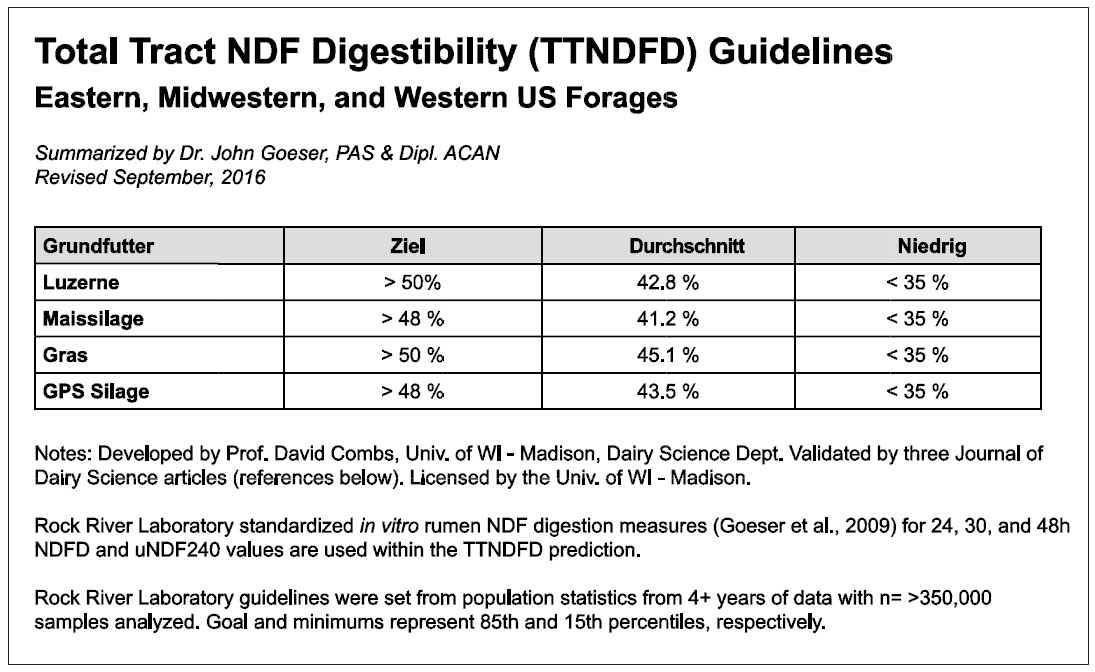
Prof. Combs form the Wisconsin-Madison University developed the TTNDFD value. The Rock River Laboratory has determined the TTNDFD value with standardized in vitro measurements of NDF digestibility after 24h, 30h and 48h as well as the uNDF240; additionally recommendations were developed ( Goeser et al., 2009). The developed recommendations were generated in 4 years with 350.000 datasets.
Sampling – How’s it done right?
To analyze the silage, a sample is taken. But this sample is only a small part of the whole picture.
For a better understanding:
500 g samples sent to the lab …
- to evaluate a silo carload (24 t) is like picking one person from a 50,000-person football stadium.
- to evaluate a bunker silo with forage (250 t) is like selecting one person from 10 football stadiums and expected that person to represent the entire crowd.
- to sample a small bunker silo (1,000 t of feed) is comparable to the selection of one person from a crowd of 2,000,000 people.
The comparison shows how important it is to draw a representative sample.
The proper sampling procedure described below follows the recommendations of leading US universities. It helps to improve the accuracy and repeatability of analysis results.
Guidelines for accurate sample taking
A good silage sample consists of several sub-samples. After the daily quantity has been taken from the face of the feed storage, 5-10 of these sub-samples (approximately 300 g) are taken, evenly distributed over the entire face of the feed storage. It is important not to take samples directly from the old face. Since the feed differs in the dry matter content and ingredients from left to right and from bottom to top, it is important that samples are taken from all areas. The recommendation is at least 1 sub-sample per 2 m silo width. All sub-samples are mixed well in a bucket. The hand mixes the food like a washing machine, so that the fine portion is always brought up again.
The usable silage sample is obtained by means of the mixing and quarter technique by reducing the sample quantity until a sample volume of approximately 500 grams is reached. This technique requires a smooth and clean place in the silo where the entire sample can be separated and divided into two halves. One half is transported back into the bucket and subjected to the described procedure until about 500 g remain.
The entire silage sample thus produced is collected in a plastic bag with approx. 1.5 liter capacity. Ideally a bag provided by RockRiverLaboratory Europe is used. Alternatively, the Paperless “FeedScan App” can be used.
Sample frequently
The number of samples to be drawn depends on the operating size. Recommendations for frequency are as follows:
- 50 cow farm – monthly sample
- 100 – 200 cow operation – 14 days sample
- More than 400 cows – a sample every 10 days
These sample intervals are optimal. A narrow sample interval is particularly useful when the results are fed into the feed calculation and thus into the current ration design. In larger herds with 1,000 cows and fast feed removal from bunker silos, the alterartion the analyzed starch content within 2 weeks can be so much that the ration must be modified, and can lead to an increase or reduction of for exaample 1 kg of corn grain. Only with this up-to-date information the farm is able to make the feeding cost-efficient and environmentally-friendly. Regardless of the number of samples tested, however, only a representive sample results in a meaningful data.
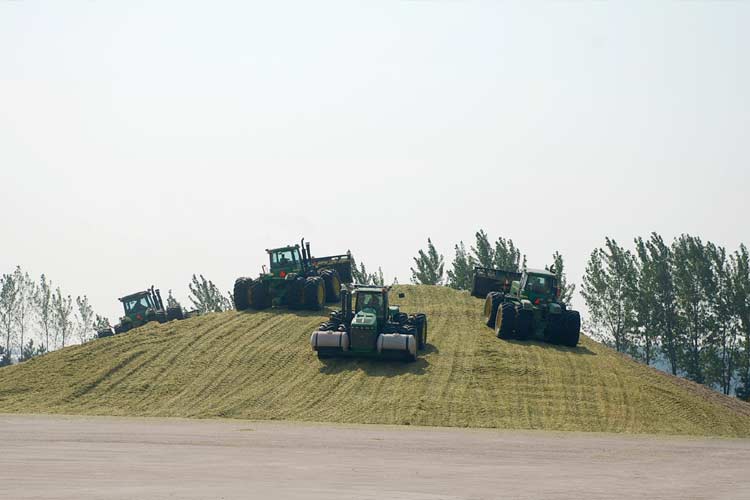
Out of such a huge amount of silage representative sample shall be picked.
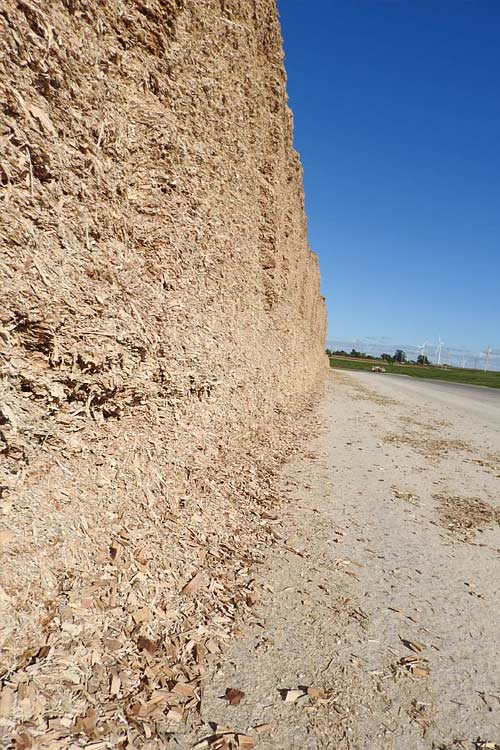
The feed looks nice, but what is in?
Calculation Tools
Fecal starch – TTSD quick calculator (metric)
Industry Articles
Total Tract Starch Digestibility
Published Research
Total amino acid content variation for commercial TMR and relationship to crude protein (PDF, engl.)
Enterobacteriaceae bacteria counts vary for US commercial dairy diets fed during summer months (PDF, engl.)
Forced-air vs. microwave oven sample drying does not affect rumen starch digestibility, estimated by in situ rumen technique, for TMR, corn silage, or high moisture corn grain (PDF, engl.)
Influence of cutting height on nutrient composition and yield of whole-plant corn silage through a meta-analysis (PDF, engl.)
Midwestern US commercial dairy survey results: corn silage kernel processing, rumen starch digestibility, and fecal starch content (PDF, engl.)
European grass silage in vitro rumen undigestible NDF measures at 30, 120, and 240 hour comparisons between two laboratories (PDF, engl.)







